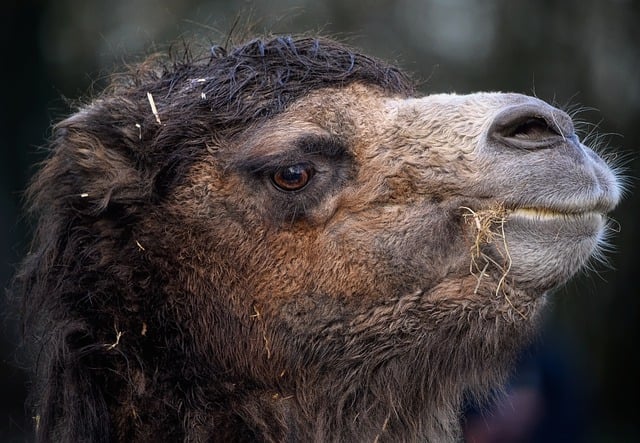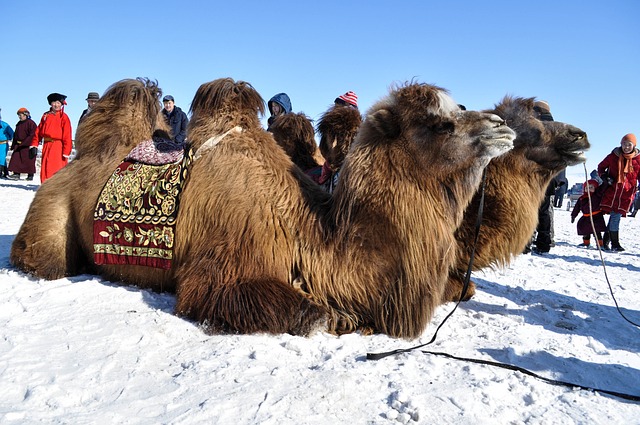In this article we give you 50 interesting facts about Bactrian camels
Scientific Name: The Bactrian camel is known as Camelus bactrianus.
Bactrian vs. Dromedary: Bactrian camels are distinct from dromedary camels, which have a single hump. Bactrian camels have two humps.
Native Range: Bactrian camels are native to the steppes of Central Asia, including regions in Mongolia, China, Iran, and Afghanistan.
Domestication: These camels have been domesticated for thousands of years and have been used for transportation and carrying goods.
Two Humps: The two humps on their backs store fat, which can be used as a source of energy and water when food and water are scarce.

Size: Bactrian camels are larger and heavier than dromedary camels. They can stand up to 7 feet (2.2 meters) at the shoulder and weigh between 1,300 and 2,200 pounds (600 to 1,000 kilograms).
Humps: The humps on their back can vary in size and can store up to 80 pounds (36 kilograms) of fat each.
Coloration: Their fur varies in color, ranging from light brown to dark brown, and it can change with the seasons to provide better insulation.
Adaptations: Their wide, tough feet are adapted to walking on rough terrain, such as sand, snow, and rocky landscapes.
Lifespan: In the wild, Bactrian camels can live up to 40 years, while in captivity, they may live longer.
Social Animals: Bactrian camels are social animals and often live in herds, which can range in size from a few individuals to larger groups.
Communication: They communicate through vocalizations, body language, and sometimes spitting.
Cold Tolerance: These camels are well adapted to cold climates and can withstand extremely low temperatures.
Migratory: Some populations of Bactrian camels are migratory and move in search of food and water.
Herbivores: They are herbivores and primarily feed on grasses, shrubs, and other vegetation.
Transportation: Bactrian camels have been used as pack animals for centuries, helping transport goods and people across deserts and rugged terrains.
Milk Production: Their milk is a valuable source of nutrition in some regions, and it can be used to make dairy products like yogurt and cheese.
Wool Production: Their fur is used to make wool, which is used for clothing and textiles.
Working Animals: In some areas, they are still used for agricultural and labor purposes.
Endangered: Bactrian camels are considered endangered in the wild due to habitat loss, hunting, and competition with livestock.
Conservation Efforts: Several organizations are working to protect and conserve wild Bactrian camel populations.
Cultural Icon: Bactrian camels are culturally significant in Central Asia and have been featured in art, literature, and folklore.
Symbolism: They symbolize resilience and adaptability in harsh environments.
Gestation Period: The gestation period for Bactrian camels is around 13 months.
Calves: Female camels typically give birth to a single calf, although twins are possible but rare.

Water Storage: Bactrian camels can drink large quantities of water when available and store it in their body tissues for later use.
Efficient Metabolism: They have a low metabolic rate, which helps them conserve energy and water in arid regions.
Efficient Digestion: Their digestive system is adapted to extract as many nutrients as possible from their food, including tough and fibrous plants.
Silk Road: Bactrian camels played a crucial role in the historic Silk Road trade routes, facilitating the exchange of goods between East and West.
Tourism: In some areas, Bactrian camel rides are a popular tourist attraction.
Habitat Fragmentation: Loss of habitat due to mining, agriculture, and infrastructure development is a significant threat to their survival.
Human Conflict: Civil unrest and armed conflict in their native regions can disrupt conservation efforts.
Efficient Sweating: Bactrian camels can sweat efficiently, allowing them to cool down in hot weather.
Adaptation to Dust: They have long eyelashes and closable nostrils to protect their eyes and respiratory system from blowing sand and dust.
Long Treks: Bactrian camels are known for their ability to carry heavy loads for long distances without tiring quickly.
Slow Pace: They walk at a slower, steadier pace than horses, making them suitable for long journeys.
Ancient Trade: Bactrian camels were a vital part of trade networks that connected Asia, Europe, and Africa.
Conservation Programs: Various organizations and governments are working to protect and conserve these camels in their native habitats.
Hybrids: Crossbreeding between Bactrian camels and dromedary camels produces hybrids known as “Tulu” or “Dzomo.”
Camel Racing: In some regions, Bactrian camels are used in traditional camel racing events.
Scientific Studies: Bactrian camels have been subjects of research on desert ecology and adaptation to extreme environments.
Efficient Water Use: Their ability to go without water for extended periods makes them suitable for arid regions.
Goods Transport: Bactrian camels have been used to transport a wide range of goods, from textiles to spices, throughout history.
Camel Products: In some cultures, camel products, including milk and urine, are believed to have medicinal properties.
Camel Festivals: In some countries, there are annual camel festivals that celebrate the significance of these animals.

Artistic Depictions: Bactrian camels have been depicted in various forms of art, including paintings, sculptures, and textiles.
Nomadic Herders: Nomadic communities in Central Asia have relied on Bactrian camels for transportation and sustenance.
Regional Names: Bactrian camels have different names in various languages, reflecting their cultural significance.
Historical Military Roles: In the past, these camels were used by armies for transporting supplies and equipment.
Film Appearances: Bactrian camels have appeared in movies and documentaries, showcasing their unique characteristics and cultural importance.
